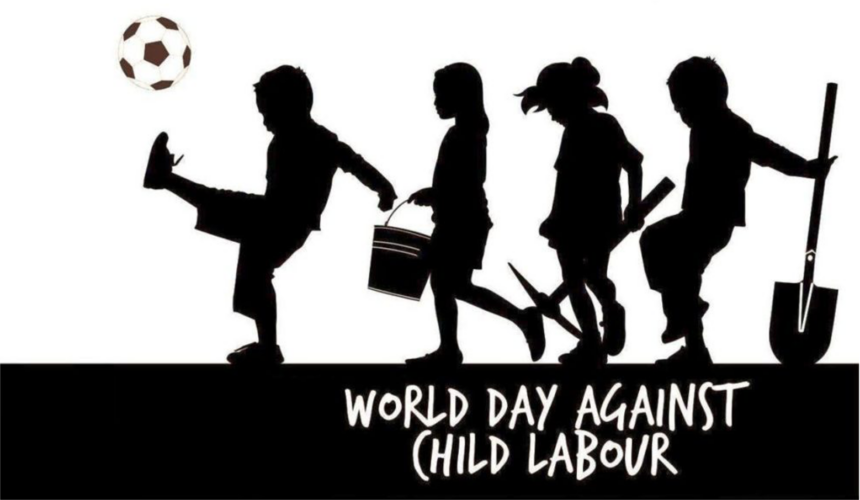The year 2024 marks the 25th anniversary of the adoption of the Convention on the Worst Forms of Child Labour, one of the eight fundamental conventions of International Labour Organization (ILO). The Convention No. 182 (C182) concerning the Prohibition and Immediate Action for the elimination of Worst Forms of Child Labour Convention became effective from Nov. 19, 2000. Another very important convention, the Convention No. 138 (C138) that came into force on June 19, 1976 was developed to regulate child labour by setting a minimum age for admission to employment that the signatories are to respect. This convention aims to give children the right to live their childhoods. A child who is not working has a better chance of developing properly, both physically and mentally and thus becoming a healthy adult. C138 legally binds all the member states which have ratified it. Of the 183 member ILO states 156 have ratified it and are to respect it. India is the largest reservoir of child labour.
To pay attention to the problem of child labour and to find ways to eradicate it, the World Day Against Child Labour celebrated every year on June 12 focuses on awareness and sensitization of all regarding the harmful mental and physical problems faced by children forced into child labour, all over the world and to take prompt action to stop this inhumane practice. A universal and a globally recognized problem, child labour has assumed alarming dimensions. Almost one in ten of all children worldwide are in child labour. United Nations Sustainable Development Goals (SDG) 8.7 calls for an end to child labour in all its forms by the year 2025. Although the numbers of children in child labour have declined by 94 million since 2000; yet the rate of reduction has slowed by two-thirds in recent years. Child labour is concentrated primarily in agriculture (71%) and this includes fishing, forestry, livestock herding and aquaculture – 17% in services; and 12% in the industrial sector, including mining.
What constitutes Child Labour?
The International Labour Organization (ILO) defines child labour as, ‘work that deprives children of their childhood, their potential and their dignity, and that is harmful to physical and mental development’. According to ILO’s data, hundreds of millions of girls and boys throughout the world are involved in work that deprives them of receiving an adequate education, health, leisure and basic freedoms, violating this way their rights. Of these children, more than half are exposed to the worst forms of child labour. These worst forms of child labour include work in hazardous environments, slavery, or other forms of forced labour, illicit activities such as drug trafficking and prostitution, as well as involvement in armed conflict.
Child labour interferes with their schooling by depriving them of the opportunity to attend school, obliging them to leave school prematurely, or requiring them to attempt to combine school attendance with excessively long and heavy work. In its most extreme forms, child labor involves children being enslaved, separated from their families, exposed to serious hazards and illnesses and/or left to fend for themselves on the streets of large cities often at a very early age. Not all work done by children is child labor. Slavery, child trafficking, debt bondage, forced labour, children in armed conflict, and children working in illegal activities are considered to be some of the worst forms of child labour. Hazardous work is also one of the worst forms of child labour.
Activities that contribute to a child’s positive development and provide skills and experience for them to become productive members of society are not child labor. In the least developed countries, slightly more than one in four children (age 5 to 17) is engaged in labour that is considered detrimental to their health and development. Poverty is one of the main reasons for child labour because of which children are forced to left their school and opt for menial jobs to support their parents for their livelihood. Moreover, some are forced into child labour by organized crime rackets.
History & Theme of World Day against Child Labour
The World Day Against Child Labour is an International Labour Organization (ILO) sanctioned holiday first launched in 2002 aiming to raise awareness and activism to prevent child labour. It was spurred by ratifications of ILO Convention No. 138 on the minimum age for employment and ILO Convention No. 182 on the worst forms of child labour. The International Labour Organization (ILO), the United Nations body that regulates the world of work, launched the World Day against Child Labour in 2002 in order to bring attention and join efforts to fight against child labour. This day brings together governments, local authorities, civil society and international, workers and employers organizations to point out the child labour problem and define the guidelines to help child labourers.
This year’s ‘World Day against Child Labour is, ‘Let us act on our Commitments: End Child Labour’ It is a reminder of the commitment made by the international community to eliminate all forms of child labour by 2025.
Global Statistics about Child Labour
According to the United nations, at the global level, 152 million children between the ages of 5-17 were in child labour, almost half them about 73 million are in hazardous occupations. Almost half (48%) of the victims of child labour are aged 5-11, 28% are 12-14 years old, and 24% are 15-17 years old. Child labour is concentrated primarily in agriculture (71%) and this includes fishing, forestry, livestock herding and aquaculture; 17% in services and 12% in the industrial sector, including mining. Almost one in ten children worldwide is in child labour. Africa ranks highest among regions both in the percentage of children in child labour one-fifth and the absolute number of children in child labour. Asia and the Pacific ranks second highest in both these measures 7% of all children and 62 million in absolute terms are in child labour in this region.
The Africa and the Asia and the Pacific regions together account for almost nine out of every ten children in child labour worldwide. The remaining child labour population is divided among the Americas (11 million), Europe and Central Asia (6 million), and the Arab States (1 million). In terms of incidence, 5% of children are in child labour in the Americas, 4% in Europe and Central Asia, and 3% in the Arab States. While the percentage of children in child labour is highest in low-income countries, their numbers are actually greater in middle-income countries. 9% all children in lower-middle-income countries, and 7% of all children in upper-middle-income countries, are in child labour. Statistics on the absolute number of children in child labour in each national income grouping indicate that 84 million children in child labour, accounting for 56% of all those in child labour, actually live in middle-income countries, and an additional 2 million live in high-income countries.
The case of India
The child labour problem is also prevalent in India. As per Census 2011, the total child population in India in the age group (5-14) years was 259.6 million. Of these, 10.1 million (3.9% of total child population) were working, either as ‘main worker’ or as ‘marginal worker’. In addition, more than 42.7 million children in India were out of school.
Five states in India are biggest child labour employers. These five states are Madhya Pradesh, Maharashtra, Bihar, Rajasthan and Uttarpradesh. Over half of India’s total child labour population works here. Uttarpradesh is the hub of child labour having 20 per cent of the country’s child labourers. There is no doubt that child labour impedes children from gaining the skills and education they need to have opportunities of decent work as an adult. Inequality, lack of educational opportunities, slow demographic transition, traditions and cultural expectations all contribute to the persistence of child labour in India. Mr. Kailash Satyarthi, a child rights activist and Noble Laureate has very aptly said that, ‘Child labour perpetuates poverty, unemployment, illiteracy, population growth and many other related social problems’. This illegal activity needs to be addressed immediately through education, inclusion and adequate legislations also.
Let us on this day work to provide an enabling environment for children to grow and live a dignified life and to create a society that nurtures their potential and restores their shattered hopes.
(The author writes on agriculture and social issues; can be reached at: [email protected])









